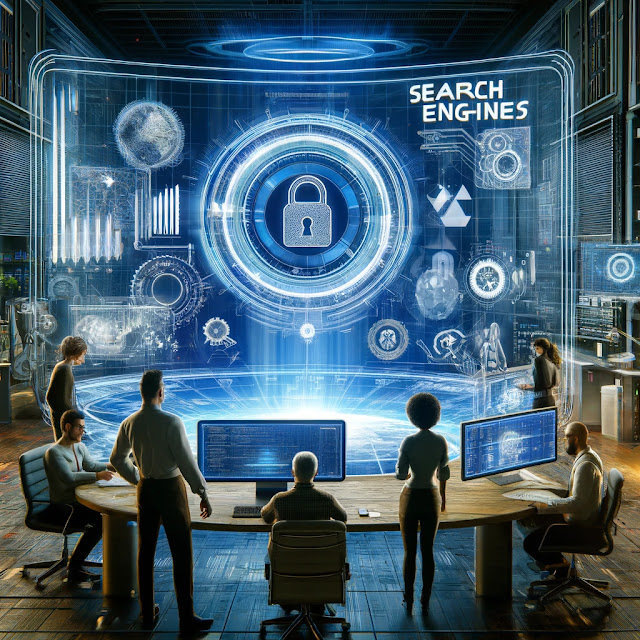Search engines for cybersecurity research ( part -1 )
In the
ever-evolving landscape of cybersecurity, staying ahead of emerging threats and
vulnerabilities is crucial. Information security professionals, researchers,
and enthusiasts constantly seek the latest insights, tools, and resources to
fortify digital defenses. One invaluable weapon in this ongoing battle is the
vast realm of search engines tailored specifically for cybersecurity research.
Cybersecurity
research has grown into a multidisciplinary field, encompassing everything from
threat intelligence and vulnerability analysis to incident response and ethical
hacking. To navigate this intricate terrain effectively, researchers rely on
specialized search engines that go beyond the surface-level results of
conventional search queries. These dedicated tools are engineered to unearth
the hidden gems within the vast sea of digital information, making them
indispensable for anyone committed to securing the digital realm.
This blog aims to shed light on the diverse array of search engines tailored specifically for the field of cybersecurity.
1. Dehashed
Dehashed is
a powerful search engine and online tool used for data breach and password leak
investigations.
Password
Leak Detection:
Dehashed allows users to search for compromised passwords associated with specific
email addresses or usernames. This is crucial for individuals and organizations
to identify and change weak or compromised passwords, enhancing their overall
cybersecurity.
Data
Breach Analysis:
Dehashed can be used to check if specific email addresses or domains have been
part of data breaches. This is valuable for understanding the exposure of
personal or organizational data on the internet.
Account Security: By identifying compromised accounts and passwords, users can take proactive measures to secure their online accounts, preventing unauthorized access and potential cyberattacks.
SecurityTrails
is a comprehensive cybersecurity platform known for its domain and IP
intelligence services.
Domain
History:
SecurityTrails allows users to access historical domain records, making it
easier to track changes, ownership, and configurations of domains over time.
This is useful for identifying malicious activities, such as domain hijacking
or changes in ownership.
Subdomain
Enumeration:
SecurityTrails can enumerate subdomains associated with a domain. This is
valuable for identifying potential attack surfaces and vulnerabilities in an
organization's web presence.IP Address Information: It provides detailed
information about IP addresses, including geolocation, associated domains, and
open ports. This is essential for identifying potentially malicious IP
addresses and mapping an organization's digital footprint.
IP Address Information: It provides detailed information about IP addresses, including geolocation, associated domains, and open ports. This is essential for identifying potentially malicious IP addresses and mapping an organization's digital footprint.
3. DorkSearch
"Dorksearch"
typically refers to using advanced search operators and techniques to find
specific information on the internet, often for cybersecurity research or web
application testing.
Precise
Information Retrieval: Dorksearch allows users to retrieve very specific information from
search engines by using advanced operators. This precision is valuable for
various purposes, including cybersecurity research, data mining, and
competitive analysis.
Cybersecurity
Exploration: In the
context of cybersecurity, dorksearch is a fundamental technique for finding
vulnerabilities, exposed data, and potential attack vectors on websites and web
applications. Cybersecurity professionals use dorks to identify security
weaknesses and help secure online assets.
Advanced Operators: Dorksearch relies on advanced search operators such as "site," "intext," "inurl," and "filetype." These operators enable users to filter results based on specific criteria like website domains, keywords within the text, URLs, and file types.
4. ExploitDB
Exploit-DB
is a valuable tool for cybersecurity professionals and researchers, offering a
wealth of information about vulnerabilities and exploits.
Vulnerability
Discovery:
Exploit-DB is a comprehensive database that provides information about known
vulnerabilities in various software, operating systems, and applications.
Security professionals and researchers can use it to discover vulnerabilities
in specific software versions.
Research
and Analysis: Users
can access detailed information about vulnerabilities, including technical
details, proof-of-concept code, and references to related security advisories.
This facilitates in-depth research and analysis of vulnerabilities, allowing
security experts to understand their impact and severity.
Security Testing: Ethical hackers, penetration testers, and security analysts use Exploit-DB to identify potential weaknesses in systems. They can test and validate exploits to determine if a system is susceptible to a particular vulnerability.
5. ZoomEye
ZoomEye is a
well-known cybersecurity search engine and reconnaissance tool that focuses on
identifying and cataloging information about internet-connected devices and
systems. Its primary purpose is to assist cybersecurity professionals,
researchers, and ethical hackers in understanding and assessing the security
posture of various online assets.
Device
and Asset Discovery:
ZoomEye scans the internet to discover a wide range of devices and systems,
including servers, routers, IoT devices, and more. This extensive device
discovery capability is essential for identifying potential entry points for
cyberattacks.
Vulnerability
Assessment: It helps
security professionals identify vulnerabilities in internet-connected assets.
By pinpointing weak points, security teams can proactively address and patch
vulnerabilities before malicious actors exploit them.
Exposure
Analysis: ZoomEye
provides insights into the exposure of sensitive or confidential information,
such as databases, configuration files, and login pages, which may
inadvertently be accessible on the internet. This assists in mitigating data
leakage risks.
Reference
:-
https://www.cybersecurity-insiders.com











Thank you for sharing the valuable information with us..
ReplyDeleteBest Cybersecurity Services.